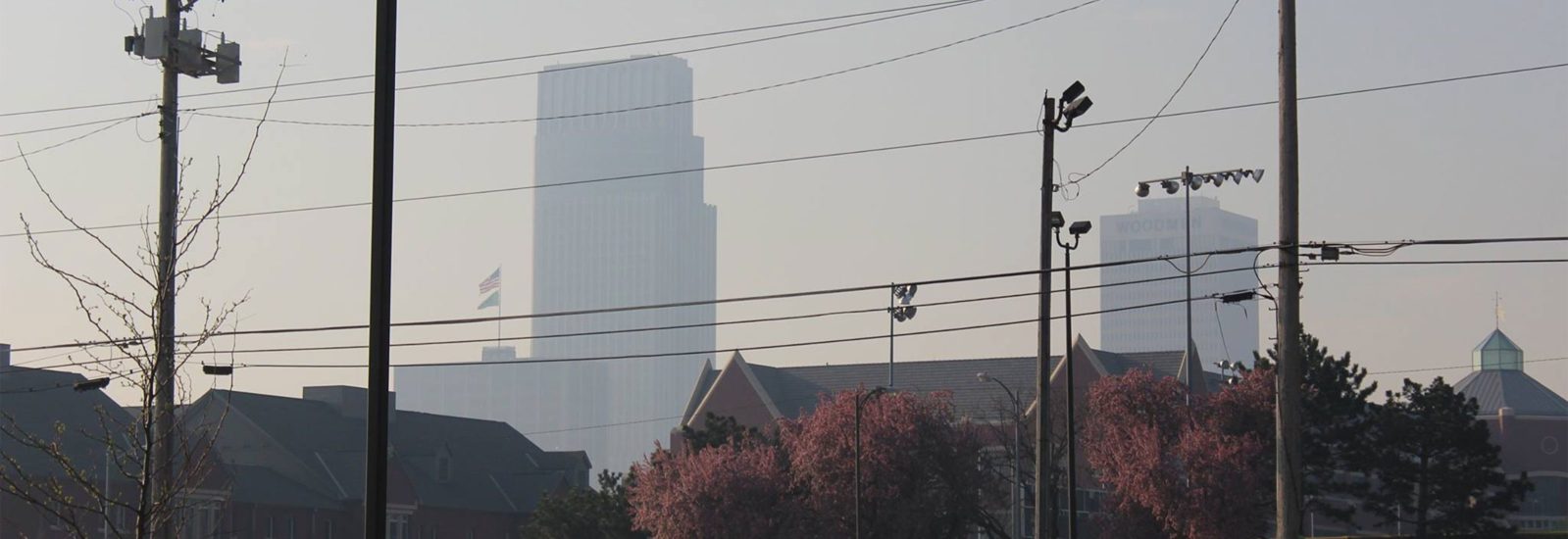Let’s clear the air on the impact air quality has on our health.
No really. Let’s clear the air.
Unfortunately, harmful, ground-level ozone readings in the Omaha-Council Bluffs area continue to be on the brink of EPA’s unacceptable, or “non-attainment,” level, especially on hot days. But little steps we make in the Omaha area, starting today, can make a big impact on our health tomorrow.
Your Health at Stake
It should come as no surprise that poor air quality can trigger asthma and can make attacks more frequent. But even for people without existing lung problems, the EPA has found that ground-level ozone and other air quality issues can:
- Make it harder for people to breathe deeply
- Reduce lung function and cause shortness of breath
- Spur coughing fits and irritated throats
- Inflame and damage airways
- Make lungs more vulnerable to infections
- Damage the lining of the lung, like a sunburn on the inside of the body
- Cause persistent lung damage
It’s not just your lungs at risk, though. Studies within the last decade have found air pollution, some from ozone, increases chances for heart and kidney disease. More surprising, poor air quality has been linked to type 2 diabetes.
“Just like we should be concerned about the quality of food that we eat, we need to be equally concerned about the quality of the air that we breathe,” said Russ Hadan, Supervisor Sanitary Control and Air Quality Lab with the Douglas County Health Department.

People Most At Risk
While everyone who breathes outside air is in danger of potential health problems if the air quality is poor, certain members of the population are more susceptible than others:
- Active children are at greatest risk from exposure to ozone because their lungs are still developing, and are more likely to be active outdoors when ozone levels are high. Children are also more likely to have asthma than adults.
- Older adults and those with respiratory issues or reduced lung function.
- Adults who are active or work outdoors.
- Certain people who have genetic characteristics that make them more vulnerable to ozone.
- People with reduced intake of certain nutrients, like vitamins C and E, are at greater risk to ozone exposure.
Breathing Easier
Thankfully, each of us has the power to help reduce ground-level ozone and improve our air quality. Little Steps Cleaner Air, an outreach campaign run by the Metropolitan Area Planning Agency, and funded by grants from the Federal Highway Administration and the Nebraska Environmental Trust, offers easy ways for all Omaha area residents to do their part.
Some of these steps include:
-
Drive less.
Carpool, take the bus, and walk or bike whenever possible. Run all your errands in one trip to be more efficient with your fuel usage.
-
Turn off your car when idling for more than 30 seconds.
Idling your car for more than 30 seconds uses more fuel than stopping and starting your engine.
-
Make sure your tires are inflated properly and that your engines are maintained.
Cars, trucks and even boats burn fuel more efficiently when they’re in proper working order.
-
Buy an electric or manual lawn mower, or if using gas-powered equipment, mow your yard during the cooler hours of the day.
Even small engines in gas-powered mowers, leaf blowers and trimmers release as much as 25 percent of unburned gasoline into the air.
-
Convert your wood-burning fireplace into gas.
Wood smoke has harmful health and environmental effects, and is less energy efficient than gas.
-
Weatherize your home by sealing cracks and insulating your walls and attic.
You will use less energy because your heater and air conditioner won’t have to work as hard.
-
Buy environmentally safe cleaning products and paint.
Recent studies have shown the environmental impact of the volatile organic compounds (VOCs) that come from solvents, paint, chemicals and cleaning products have been underestimated in the past, so use as little as possible.
For more information on how your little steps can turn into a big impact, visit littlestepscleanerair.com.
